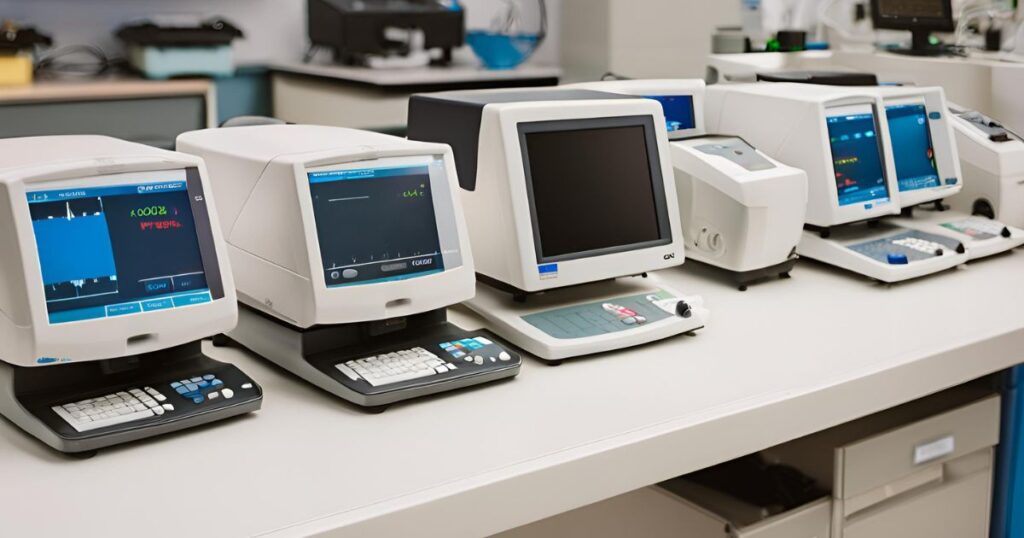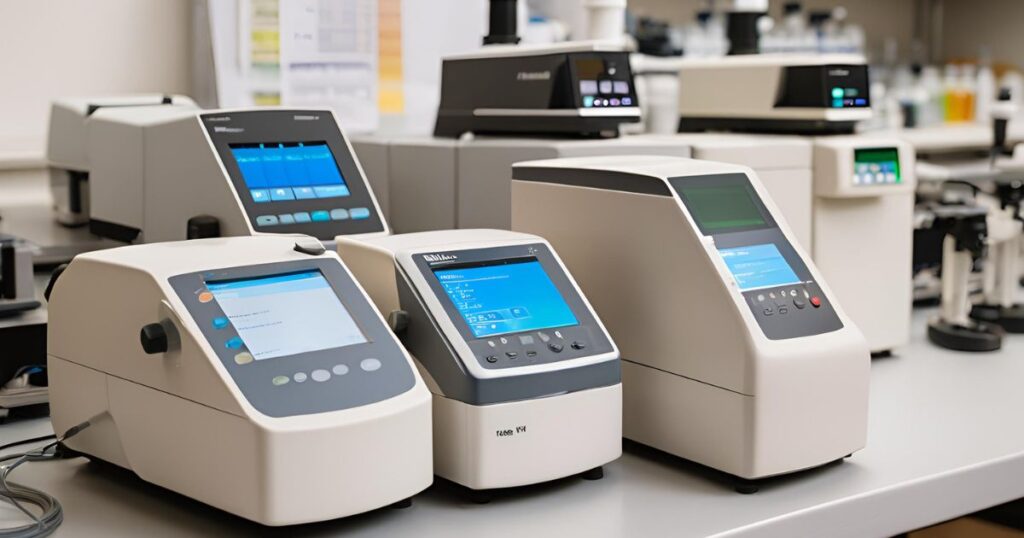The double-beam spectrophotometer functions as an analytical tool that is widely used for measuring how much light is usually absorbed by gas or liquid samples. Transmission in this spectrophotometer can be easily met by utilising visible light, infrared rays, and ultraviolet radiation. However, the latest devices use a wide spectrum of electromagnetic wavelengths to accomplish the transmission process and it contains microwave rays, UV rays, infrared rays, and visible rays.
Why is the reason behind naming it as double beam spectrophotometer?
The reason why it is called double beam spectrophotometer is the utilisation of two light beams:
- Sample beam that travels through the sample to reflect the absorption level in it.
- Reference beam transmits through reference standard to monitor the energy of the light
Reasons to use double beam spectrophotometer
Why are laboratories inclined to use double beam spectrophotometers? Here are the advantages of this device:
- Compared to single beam spectrophotometer, the double beam device incorporates higher level of automation and improves the detection level. Luckily, the real-time results are usually not affected by various instability factors like stray light, drifting of lamp, and fluctuations in the voltage.
- Using double beam spectrophotometers offer quicker results and measurements
- When using the device, the user doesn’t need to change the transmittance within the range of 0% to 100%
- You need give the lamp the warm up time required as it improves the output rate and also enhances its longevity
- The device shows the intensity ratio between the sample and reference beam
- Fluctuations are greatly reduced at the source of radiation and the technology used promotes the scanning efficiency across a wider range of wavelengths.

How to pick the right spectrophotometer for your needs?
Typically, spectrophotometer is an analytic instrument used for performing quantitative and qualitative analysis effectively. It has been used in several manufacturing and scientific fields like environment, materials, biology, chemistry, medicine, and food. It is widely used in biological a well as life science laboratories to measure the samples of nucleic acids, concentration of DNA or RNA, protein samples, how much bacterial content exists in an organism, or whether an assay solution contains a specific substance.
Choosing the right spectrophotometer relates to what your requirements are but you need to also consider the industry-specific requirements. Find below the basic things you need to look out for when buying the right spectrophotometer:
- Precision of the device
Today, you have spectrophotometers that help maintaining the error ate much below 1%. This is due to the materials used to construct the sample window like quartz glass that transform the samples to droplets due to minimised scattering of light and cohesion. So, your aim should be to judge the precision of the device.
- Efficiency of the device
A majority of spectrophotometers today have high testing speed that goes up to ten seconds. But a double beam spectrophotometer takes no more than three seconds to evaluate the results, which increases the efficiency of the device by multiple times.
- Calibration
When it comes to spectrophotometers, there are two types of calibrations you will notice, path-length calibration and light source calibration. When the luminosity reduces with repeated use of the instrument, it must be calibrated within every one or two years. Well, it’s easy. Just follow the manufacturer’s parameters and follow the DIY process to calibrate the machine without calling the professional.
Unfortunately, you may face a great deal of problem to calibrate the path length in the latest devices. Remember that the modification occurring due to path length modification may affect the outcome. That is why you need to calibrate it within three to six months.
Overview – choosing a spectrophotometer
Read the points below to get an overview of how you must choose the spectrophotometer. Here is how it works:
- The colour measurement requirements differ from one industry to another, so check what your industry requires before choosing the spectrophotometer.
- The spectral range must suit your specifications, so the wider the range more comprehensive is the colour analysis
- Check for a device that comes with user-friendly interface – customised settings, intuitive design, and touchscreen are the features to check
- What are the light sources you prefer? Check your applications and the conditions of illumination before you decide
- Look for multi-angle features if you need the device for an industry where surface appearance plays a vital role.
Are you searching for a feature-rich double beam spectrophotometer? Connect with us at https://www.igenels.com/ to get the highest quality of laboratory devices to help you accomplish your research goals.

